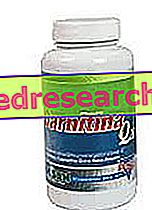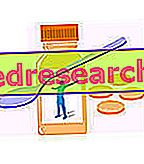Generality
Description and hints of botany of red clover
The red clover ( Trifolium pratense - Fam. Fabaceae or Leguminose) is a perennial plant, widespread and cultivated as fodder grass in various countries of the world. It prefers grasslands and wet pastures, where it grows up to 50 centimeters in height, producing purple-red inflorescences.
Red clover is a medicinal plant characterized by an excellent content in biologically active isoflavones (drug flavonoids).

Indications
When to use red clover?
In phytotherapy and in the medical field, taken by mouth, the red clover finds space in the care of:
- Respiratory disorders: bronchitis, cough, hoarseness
- Gastric disorders: gastritis and loss of appetite
- Diarrhea
- Intense oxidative layer
- Hypercholesterolemia
- Symptoms of menopause.
Furthermore, it is assumed that red clover can be useful in the prevention of:
- Atherosclerosis
- Certain tumors
- Osteoporosis.
For external use, it helps in skin problems such as irritation and inflammatory states:
- Eczema
- Psoriasis
- Acne
- Wounds
- Burns.
Property and Effectiveness
What benefits has red clover shown during the studies?
The drug consists of red clover flowers, which contain: volatile oil, flavonoids, coumarin derivatives and cyanogenic glycosides. Among the flavonoids stand out isoflavones, natural phytoestrogens very studied for their antioxidant and similestrogenic effects. The red clover contains four different isoflavones: genistein, daidzein, formononetin and biochanin A (precursor of genistein).
Among the various isoflavones present in the red clover, genistein boasts the greatest antioxidant power (three times higher than that of vitamin C) and a crucial role in inhibiting the growth of cancer cells.
Red clover phytoestrogens are advertised as a natural alternative to hormone replacement therapy, but currently there is no satisfactory data on their effectiveness.
These substances, transformed in the body into phytoestrogens, bind to the physiological estrogen receptors, behaving as weak agonists or even antagonists.
The isoflavones contained in the red clover have properties:
- Antioxidant
- antitumor
- Cholesterol-lowering - especially on LDL
- antiatherogenic
- Direct anticancer, against estrogen-dependent tumors, and indirect antiangiogenic (prevents the development of blood vessels that nourish cancer cells).
- Antiosteoporotica (favoring bone mineralization)
- Beneficial against the symptoms of menopause.
However, scientifically speaking, the most significant evidences concern the treatment of high cholesterol and hot flashes in menopause.
Doses and Mode of Use
How to use red clover?
Red clover can be used in various ways:
- Dry form, after infusion, to obtain a hot drink like herbal tea to drink.
- Powdered in the capsules.
For external use, red clover is usually used as an ingredient in baths or in packs to be applied locally.
The dose of red clover depends on various factors, such as age, health and other conditions. At the moment there is not enough scientific information to determine an adequate dosage for red clover.
Note : Please note that "natural" products are not necessarily considered safe as they are natural. Make sure you follow the directions on the product labels correctly and consult your pharmacist, doctor or other healthcare professional before using them.
Side effects
In food quantities or suggested by supplement companies, no known side effects are known.
Following overdoses, red clover can cause:
- Reactions similar to rashes
- Muscle pains
- Headache
- Nausea
- Vaginal bleeding (spots) in some women.
In some animals an impairment of reproductive function was observed up to sterility (due to the hormone-like action of isoflavones).
Contraindications
When should red clover not be used?
- As a supplement, red clover is NOT considered safe during pregnancy and lactation. The warranty is also not recommended for external use.
- Red clover could increase the likelihood of bleeding. In the event of bleeding disorders, it is advisable to avoid large quantities and use it with caution.
- In the case of breast, uterine, ovarian, endometriosis or uterine fibroid cancers, red clover may act as an estrogen worsening the condition.
- Protein deficiency S: as this category of patients is more likely to develop blood clots, it is feared that red clover phytoestrogens may increase this danger.
- Surgical interventions: for the same reason described above, it is advisable to suspend the red clover at least 2 weeks before the operation.
Pharmacological Interactions
What drugs or foods can change the effect of red clover?
There is a series of drugs that can interact moderately with the active ingredients of red clover:
- Estrogen-based contraceptives and estrogen-based hormone therapy (estradiol, ethinyl estradiol and levonorgestrel, ethinyl estradiol and norethindrone, etc.).
- Drugs modified by the liver against cytochromes P450 1A2, P450 2C19, P450 2C9 and P450 3A4 (they are numerous).
- Drugs that slow blood clotting (anticoagulants / anti-aggregants, such as aspirin, clopidogrel, diclofenac, ibuprofen, etc.).
- Tamoxifen.
Precautions for Use
What do you need to know before getting the red clover?
Rarely these substances have shown noteworthy side effects but, before relying on the red clover extracts to cure any pathology, it is good to consult the opinion of an expert, in particular if you are already following the therapies.
Even when the desire to be cured using natural remedies is strong, we must not forget that the abandonment of a proven useful drug therapy, in favor of plant substitutes of doubtful clinical efficacy (as in the case of red clover isoflavones), is a behavior risky for one's health. The situation changes when these products are used for preventive purposes: considering the absence of side effects at the recommended doses and the potential therapeutic effect, they can be consumed with a certain tranquility.



